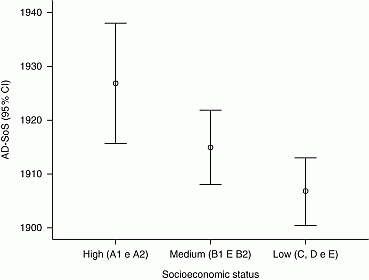ICCBH2013 Poster Presentations (1) (201 abstracts)
Comparison of socioeconomic status on bone mass assessed by quantitative ultrasound of hand phalanges of boys from 7 to 15 years old
Luiz Carlos de Barros Ramalho , Juan Eduardo Samur-San Martin , Fábio Bertapelli , Ezequiel Moreira Gonçalves , Vinicius Barbeta , Tathyane Krahenbuhl , Roberto Regis Ribeiro , Marcos Tadeu Nolasco da Silva & Gil Guerra-Júnior
Department of Pediatrics, Faculty of Medical Sciences (FCM), Center for Investigation in Pediatrics (CIPED), University of Campinas (UNICAMP), Campinas (SP), Brazil.
Several environmental and genetic factors are determinant, also including sex, hormonal, ethnics, nutritional and lifestyle, may interferer on bone mass of children. However, the pediatric studies that approach the socioeconomic status and the quantitative ultrasound parameters (QUS) are scarce. The aim of this study was to compare the socioeconomic status on bone mass assessed by QUS in boys from 7 to 15 years old. In this cross-sectional study, were evaluated 520 Brazilian boys (9.7±1.5) from different socioeconomic status. The measurements of QUS parameter, amplitude dependent of speed of sound (AD-SoS) were obtained by using the 3th generation of DBM Sonic BP device (IGEA-Carpi, Italy). The socioeconomic status was classified according with the Criteria of Economic Classification Brazil of Brazilian Association of Research Company (ABEP-Brasil). Regarding to the socioeconomic status, most boys (48.8%) were classified in the lower class. The AD-SoS values were significantly higher (P<0.05) in the high class (1926.8±45.1), when compared to the lower class (1906.6±50.8), as shown at Fig. 1.

Figure 1 Comparison of AD-SoS values according to the socioeconomic status.
The results of this study shows that the socioeconomic factors may interferer significantly on the bone mass of this sample.




